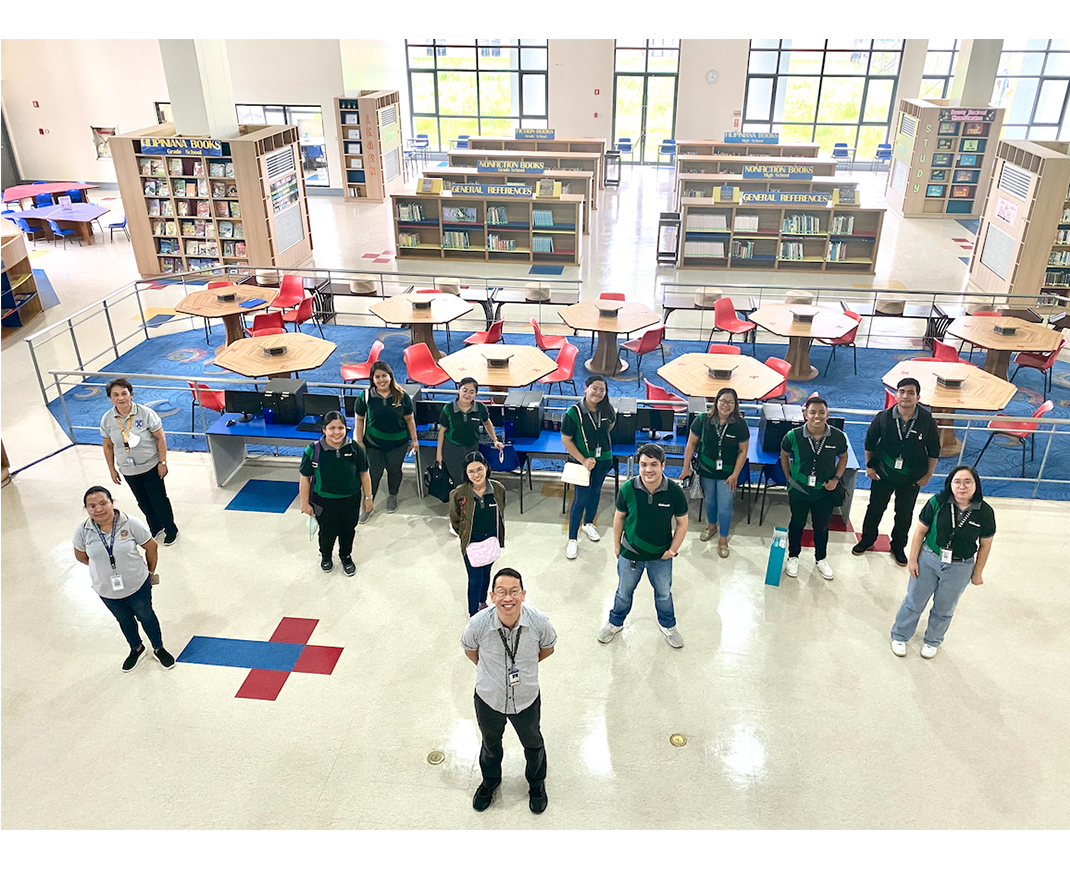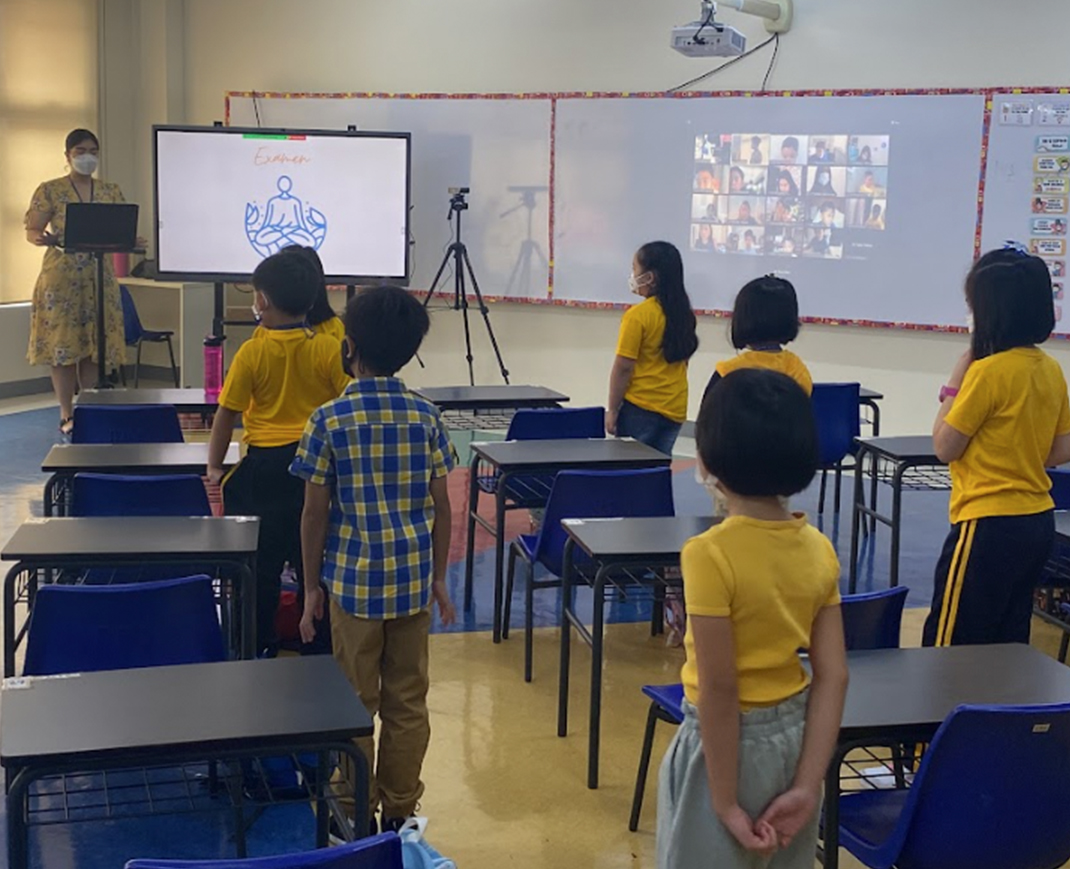 Xavier School Nuvali
Xavier School Nuvali - About Us
- Admissions
- Kindergarten
- Grade School
- Junior High School
- Senior High School
- Download School Fees
- Financial Aid
- Campus Life
- Circulars
- Give
- Careers
In today’s changing times, Chemistry significantly helps in solving societal issues and in improving processes that benefit the greater good. Therefore, students of Grade 11 HUMSS and ABM also aim to be bearers of light through sharing the knowledge we had acquired after attending the webinar about the importance of Chemistry in society and technology with regards to establishing possible solutions for them. Even though we are aware of the prevalence of crises in our society, especially in the aspect of health, we can observe that not all pay close attention to these issues which results in not exerting enough effort to actually fight against them.
In an online talk held last February 21, the Science Department invited Mr. Rhowell N. Tiozon to impart his knowledge to the Grade 11 HUMSS and ABM students regarding the role of chemistry in the enhancement of nutritional quality of rice in the Philippines. He is a Ph.D. student at the University of Potsdam-Germany under the faculty of the Science Institute of Molecular Plant Physiology and Biochemistry, a scholar of the German government for Tropical and Subtropical Agricultural Research, and also a researcher in the International Rice Research Institute.
Mr. Tiozon said that his battle with cancer was what ignited his passion for researching various dietary benefits of consuming colored rice. He was able to recognize that the root cause of cancer was due to the unhealthy lifestyle and diet. Thus, he wants to raise awareness among Filipinos who are accustomed to consuming white rice through research in order to give the consumers options that are more beneficial for their health.
As Mr.Tionzon shared, a number of health issues pertaining to malnutrition, and an increase in cases like diabetes and cancer are due to the deprivation in the healthy consumption of food. To resolve these, there is ongoing research by the International Rice Research Institute on processes that can enhance the nutritional quality of rice, while discussing further on how the enhancement of the benefits of colored rice work to individuals.
In comparison to white rice, colored rice has a higher nutritional value. It is derived from the deposition of anthocyanin and proanthocyanidins present in the bran layer of the grain; this imbues their color and enhances nutrients. For instance, Mr.Tionzon suggested that purple rice contains antioxidant compounds that assist in significantly preventing memory impairment and hippocampus neuron generation when tested on rats. Further testing on diabetic rats, they learned that the consumption of black rice could significantly reduce the blood glucose level that serves a sense of hope in combating Reverse Type 2 Diabetes. After observing around 320 types of Red Rice, researchers were able to discover Catechin as a common compound that inhibits the growth of colon, liver, and breast cancer.
Other rice aids in the prevention of obesity as they have pointed out y-Oryzanol (an antidiabetic effect) lipid production and reduction of glycerol-3-phosphate present in the rice bran oil. y-Oryzanol suppresses adipocyte differentiations which amount to the stability of colored rice and allows longer storage time. Furthermore, it was found that colored rice exhibits inhibitory properties against elastase, collagenase, and tyrosinase that contribute to lifespan extension and anti-aging. Due to sonication, the rice grain forms micropores which then increase the vitamin absorption of the rice.
Sonochemistry is done through the sonication of rice by soaking it in the sonicator, drying it for a day, and then proceeding with its fortification or the soaking of rice in nutrient and mineral-rich compounds, this, in turn, allows for the enhancement of nutrient uptake. The difference between the appearance of sonicated-fortified rice and unfortified rice is that sonicated-fortified rice appears to have a yellowish color compared to a white-colored unfortified rice. The hardness of sonicated-fortified rice is also decreased upon its fortification. Sonochemistry was proven to increase the levels of Vitamin B9 by 4,054-fold; this data is crucial because the lack of Vitamin B9 may lead to birth defects. Such information is a revelation as knowing what sonicated-fortified rice can offer, may possibly bring us one step closer to aiding malnourished communities effectively.
The sonification of rice grain promotes the formation of surface micropores that help increase the vitamin B5 uptake up to 140%. This is vital for the manufacturing of red blood cells, sex and stress-related hormones. An increase in the production of iron was also observed, it is a mineral our body needs to continually produce as the fluidity of the production of hormones is essential for the growth and development of the human body.
Another procedure that is done to improve rice quality is genetic engineering. Rice is genetically engineered to have more nutrients such as vitamins A and D, which help reduce birth defects and malnutrition in expecting mothers. The texture of the rice is also modified so that it suits the preference of the consumers. An example of genetically engineered rice would be Golden rice. Golden rice contains vitamin A which is important for enhancing the immune system, and helps in preventing spread of infectious diseases. Providing more sources of Vitamin A to impoverished communities may reduce their susceptibility to malnutrition, and may give them the opportunity to strengthen their bodies and improve their health.
Despite the goal of addressing malnutrition and having a healthier lifestyle, genetically engineered rice is more expensive than regular white rice here in the Philippines. This is because genetically modified rice, or Golden Rice for that matter, is vulnerable to bacterial infection because its bran or grain husk is rich in minerals and nutrients. Despite its advantages, we don’t have the resources to properly handle these products currently.
Here in the Philippines, poverty rates continue to increase which means more individuals are suffering from malnutrition. Despite having researches that propose solutions for this problem, it is not being used or implemented due to a lack of awareness and misinformation. The government also does not have enough policies, programs, and projects that are based on research that will improve the situation of the Filipino public.
This is why we HUMSS and ABM students play a role despite not doing the actual experiments or research ourselves. We might not realize the relevance of Chemistry in our lives yet, but the reality is that we are the ones who can bridge the science to the general public.
As ABM students, we have the ability to promote the use of rice byproducts to create plastics and drug delivery systems, which would then enable us to use rice to its full potential. As more products make use of rice, or even its by-products, demand for it will increase and may give hardworking farmers better profit. An increase in attention for rice may also push the public to pay more attention to the agriculture sector, which is crucial to Philippine society.
As HUMSS students, we have the ability to advocate for an increase in policies and legislation that will prioritize the safety and health of all Filipinos and to fight against the sensationalization of misinformed ideas. We may aid in the formation of projects that strive to solve the pressing issue of malnutrition and hunger in our society. We must strengthen our compassion for one another, especially when we have the opportunity to bring about change. We must seek humanity in everyone, and fight to protect it.
“Excel in everything you do and surely your future self will thank you.”
These are some words left by our speaker, Mr.Tionzon. He reminds us that we are all capable of being persons for others because we are equipped with knowledge about science and our respective expertise. It is not just about knowing what we know but also using that information to do what we can for our fellow Filipinos, and for the future of our country.
-Maria Alexandria E. Enaje (11A HUMSS), Zsara Marie Clare C. Herce (11A ABM), Janine Mikyla U. Hung (11A HUMSS), Christianne Grace C. Maduli (11C HUMSS)

XSN Librarians Share Best Practices

Rose Guada Manalo wins international essay writing contest.

Lessons Learned at Xavier School Nuvali After Four Weeks of Hyflex Schooling